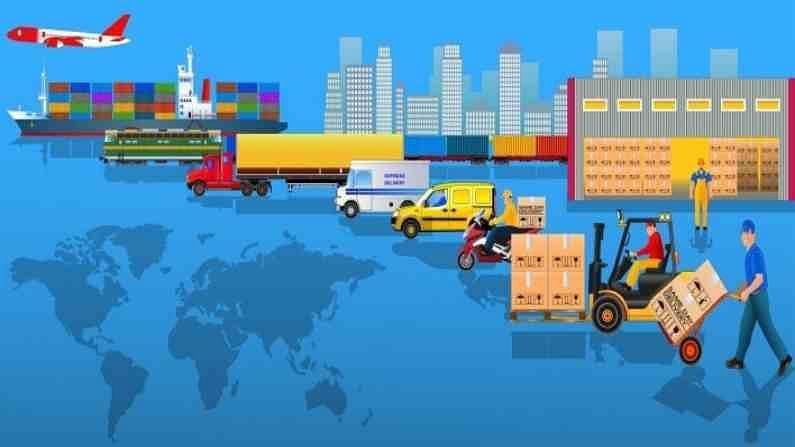What is RoDTEP? How will it benefit these sectors?
Steel, pharmaceuticals and chemical sectors have been excluded from RoDTEP.

With an objective to give a boost India’s export competitiveness, the government recently notified guidelines and rates for the Remission of Duties and Taxes on Export Products (RoDTEP) export scheme. The scheme will help boost India’s exports and competitiveness in global markets as the scheme aids in zero rating of exports. The rates under RoDTEP for different sectors will be 0.5%, 2.5%, and 4.0% and will apply to 8,555 tariff lines. The scheme takes effect from January 1, 2021. The government set aside Rs 12,454 crore for refunds under RoDTEP for the current fiscal. Commerce Secretary BVR Subrahmanyam said Rs 19,400 crore would be available for 2021-22 for the RoDTEP as well as the Rebate of State and Central Taxes and Levies (RoSCTL). The RoSCTL scheme was announced for the export of garments and apparel, covering Rs 6,946 crore under the scheme.
Here’s all you need to know about RoDTEP
How RoDTEP will work
The scheme aims to refund to exporters duties and taxes paid, such as VAT and fuel used in transportation, Mandi tax, and duty on electricity used to manufacture, all of which were previously not refunded. Rebates under RoDTEP will be claimed as a percentage of Free on Board (FoB) on the board of value of exports; rebates on certain products will also be subject to the per-unit value of the exported product. The rebate under RoDTEP would not be available on duties and taxes already exempted, remitted, or credited.
Sectors included under the scheme
Marine, agriculture, leather, gems and jewellery, automobile, plastics, electrical, electronics and machinery are some of the sectors which will be included under the scheme.
RoDTEP is a big boost for the textile Industry
India’s share in global exports of cotton yarn shrunk 600 basis points to 23% in CY2020 from 29% in CY2015, while its share in exports of readymade garments (RMG) stagnated at 3-4% over the past decade. According to William O’Neil India, a lack of free trade agreements (FTAs) and significant improvement in peer competitiveness are the main reasons for this fall.
With the advent of RoSCTL and RoDTEP, the entire textile value chain is covered. Cotton yarn and fabrics were hitherto eligible only for duty drawbacks. Now on, cotton yarn will receive 3.8% RoDTEP with a cap of Rs 11.40/kg and woven fabric, 4.3% with a cap of Rs 3.4/sq m. According to the Southern India Mills’ Association (SIMA), RoDTEP will provide an impetus and opportunity for India to increase its exports, convert raw products into value-added goods, increase the influx of foreign exchange, and create jobs in the domestic economy.
Knitted fabric has only received a 1% duty drawback. SIMA has requested the government to review the rate based on modular RoDTEP. Knitted fabric exports deserve higher benefits than yarn exports, which have been taken care of via RoDTEP for woven fabric.
India’s electronics industry
India’s exports of electronics remained stagnant at around $6.4 billion from 2015-16 to 2017-18. After an additional 2%, merchandise export incentive scheme (MEIS) was notified in December 2017, the electronics industry grew 85% from 2017-18 to 2019-20. Exports from this industry in 2019-20 stood at $11.22 billion. Electronics exports as a percentage of India’s total exports grew from 2.2% to 3.6% during that period. Thus, the increase in the MEIS rate has truly demonstrated a positive impact on exports of electronic goods over that period.
“A similar trend can be expected in the textile segment as well if macro factors remain supportive in future,” William O’Neil said.
Non-ferrous metal
The financial services firm believes that non-ferrous metal exports also stand to benefit from RoDTEP.
Zinc: RoDTEP set at 2%; hence, MEIS scrips benefit is restored
Copper: 0.3% in current regime versus 2% in the previous regime
Aluminium: 2.2% currently; entire benefit increased from the earlier 2%
Lead: 1.4% currently versus 2% earlier
Sectors excluded from RoDTEP
Steel, pharmaceuticals and chemical sectors have been excluded from RoDTEP. “The government believes these sectors have already done well, without export incentives,” said William O’Neil.
It further added that RoDTEP would make India a WTO-compliant exporter in the international market. The process promised by the GoI seems to be a simpler, more transparent one for exporters, which also improves efficiencies in the collection of refunds. The MEIS scheme was not WTO-compliant.
Download Money9 App for the latest updates on Personal Finance.
Related
- इंडसइंड बैंक का शेयर 23 फीसदी टूटा, 52 सप्ताह के निचले स्तर पर
- एशियाई बाजारों में तेजी के बीच सेंसेक्स 564 अंक चढ़ा
- अशोक लेलैंड की कुल बिक्री फरवरी में दो प्रतिशत बढ़ी
- टॉप से रिवर्स गियर में कैसे आ गई टाटा मोटर्स, एक्सप्रेसवे से कुछ यूं उतरी कंपनी, क्या अब आने वाले हैं अच्छे दिन?
- इस शेयर ने बीते 5 साल मे दिया 1600 फीसदी का रिटर्न, अब जारी करेगी 100 करोड़ की NCD
- GE Aerospace की IAF के साथ बड़ी डील, T700 इंजन के मेंटेनेंस के लिए करार

